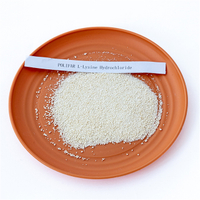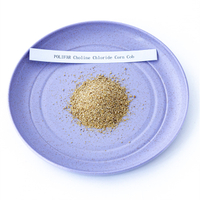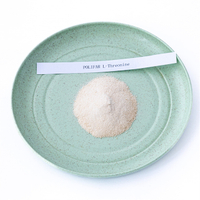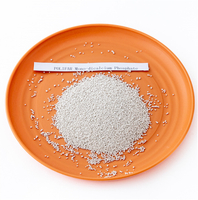Views: 0 Author: Site Editor Publish Time: 2021-05-08 Origin: Site








There are four isomers of threonine. Among them, D-threonine is difficult to be absorbed and utilized by animals. The naturally-occurring threonine is feed grade L-Threonine. The threonine we add generally refers to L-Threonine powder, which is maintained and used by animals, necessarily for growth. After artificial fermentation and purification, this feed additive can finally exert its superiority.
Here is the content list:
What are the factors that affect the amount of L-Threonine required?
Do different animals have the same needs for L-Threonine?
How to interpret the significance of feed additives industry development?
The requirement of feed additives is affected by many factors. These factors may limit the amount, and may also make farmers need to use more L-Threonine. Among all the factors, the following ones have the most significant influence on the dosage and the most research value.
Feed composition is an important factor affecting the requirement of L-Threonine. The content in animal protein is rich, and content in soybean cake is also high, but in grain feed, threonine is relatively lacking.
L-Threonine is the second limiting amino acid of sorghum, barley, wheat and sunflower seed cakes, and the third limiting amino acid of corn. L-Threonine deficiency is also found in many other grain-based feeds.
Using L-Threonine can reduce the CP level in the feed, and make the amino acid composition more in line with the ideal protein balance, which can significantly reduce the amount of nitrogen excretion and reduce the waste of nutrients.
Adding L-Threonine to high-protein feed has little effect on animals; however, a large number of experiments show that adding L-Threonine crystal to low-protein feed can obtain growth performance and feed remuneration at normal or even exceeding the original protein level.
The ideal protein concept puts forward the optimal ratio of feed amino acids. The amount of L-Threonine required has relatively large relationship with the dosage of other amino acids.
The addition of threonine can eliminate the decrease in body weight caused by excessive lysine, and when feed grade L-Threonine becomes a limiting factor for protein deposition in the body, glutamic acid has a partial threonine saving effect.
Farmers need to strictly pay attention to the performance of livestock and poultry lacking feed grade L-Threonine. Most of them are decreased feed intake, growth retardation, decreased feed utilization, and fatty liver, which causes changes in a series of physiological and biochemical indicators in the body.
Poultry's requirement for L-Threonine is restricted by breed, age, sex, production performance, diet type and environmental temperature. Even poultry of the same breed, different growth stages and different sexes have different L-Threonine requirements. Different types of poultry have different requirements at different ages.
Numerous studies have shown that fast-growing lean pigs have higher requirements for L-Threonine than ordinary pigs, and sows are less sensitive to L-Threonine compared to castrated boars. According to different dietary protein sources or diet types, pigs have different requirements.
Although the use at this stage still has many limitations, at the same time, we believe that the future research results of L-Threonine can maximize the strengths and avoid the weaknesses to better meet the needs of different livestock.
At present and even in the future, the development and production will show a trend of continuous technological development. With the continuous advancement of the technological process of the feed additive industry, a batch of feed additives with high technological content will appear.
Under this circumstance, the feed industry will also be driven to develop in the direction of science and technology, which in turn will promote the development of animal husbandry to a higher level.
Due to the continuous development of the scale of the breeding industry, the demand for compound feed will greatly increase, and the quality requirements will continue to increase, which will strongly promote the professional development of the feed additive industry.
Feed costs account for a large proportion of the entire animal husbandry cost, making the use of additives such as feed grade L-Threonine necessary. In several years of research, L-Threonine powder has been promoted and applied through the improvement of various new feed technologies. Polifar Group. is not only a professional producer of crystal L-Threonine, but also a dedicated seller, providing you with comprehensive and considerate services.






